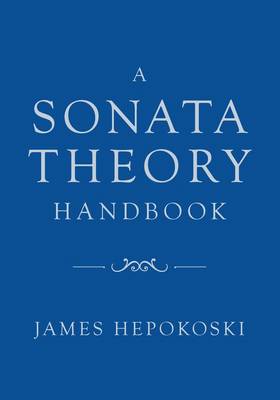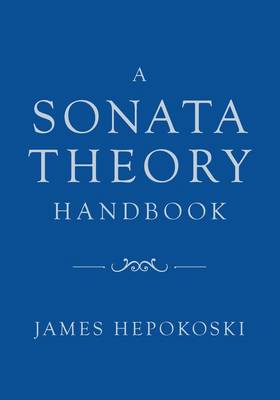
En raison d'une grêve chez bpost, votre commande pourrait être retardée. Vous avez besoin d’un livre rapidement ? Nos magasins vous accueillent à bras ouverts !
- Retrait gratuit dans votre magasin Club
- 7.000.000 titres dans notre catalogue
- Payer en toute sécurité
- Toujours un magasin près de chez vous
En raison de la grêve chez bpost, votre commande pourrait être retardée. Vous avez besoin d’un livre rapidement ? Nos magasins vous accueillent à bras ouverts !
- Retrait gratuit dans votre magasin Club
- 7.000.0000 titres dans notre catalogue
- Payer en toute sécurité
- Toujours un magasin près de chez vous
Description
Sonata form is the most commonly encountered organizational plan in the works of the classical-music masters, from Haydn, Mozart, and Beethoven to Schubert, Brahms, and beyond. Sonata Theory, an analytic approach developed by James Hepokoski and Warren Darcy in their award-winning Elements of Sonata Theory (2006), has emerged as one of the most influential frameworks for understanding this musical structure. What can this method from "the new Formenlehre" teach us about how these composers put together their most iconic pieces and to what expressive ends? In this new Sonata Theory Handbook, Hepokoski introduces readers step-by-step to the main ideas of this approach. At the heart of the book are close readings of eight individual movements from Mozart's Piano Sonata in B-flat, K. 333, to such structurally complex pieces as Schubert's "Death and the Maiden" String Quartet and the finale of Brahms's Symphony No 1 that show this analytical method in action. These illustrative analyses are supplemented with four updated discussions of the foundational concepts behind the theory, including dialogic form, expositional action zones, trajectories toward generically normative cadences, rotation theory, and the five sonata types. With its detailed examples and deep engagements with recent developments in form theory, schema theory, and cognitive research, this handbook updates and advances Sonata Theory and confirms its status as a key lens for analyzing sonata form.
Spécifications
Parties prenantes
- Auteur(s) :
- Editeur:
Contenu
- Nombre de pages :
- 352
- Langue:
- Anglais
Caractéristiques
- EAN:
- 9780197536827
- Date de parution :
- 15-12-20
- Format:
- Livre broché
- Format numérique:
- Trade paperback (VS)
- Dimensions :
- 175 mm x 251 mm
- Poids :
- 612 g

Les avis
Nous publions uniquement les avis qui respectent les conditions requises. Consultez nos conditions pour les avis.






